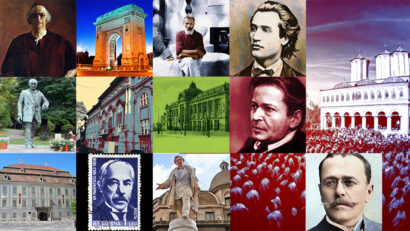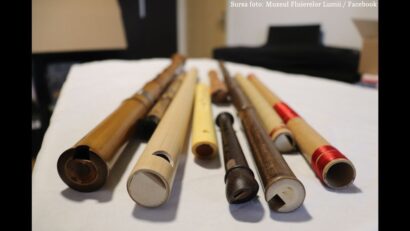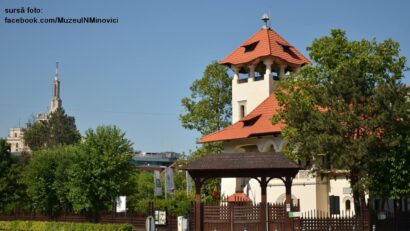The Evangelical Church in Bistrita
Bistrita was built after the model of the medieval cities in Western Europe

Christine Leșcu, 28.07.2018, 13:09
First documented in 1241, the city of Bistrita, in central Romania, actually started to develop a century earlier when the first German settlers, also known as Transylvanian Saxons, had arrived in the area. Bistrita was built after the model of the medieval cities in Western Europe to later grow into one the main seven Saxon-inhabited cities of Siebenburgen, as Transylvania was called back in the time of the Austro-Hungarian Empire. Like most of Transylvanias medieval burgs, Bistrita developed around a church, which was Catholic at first then turned into a Reformed one. Here is historian Vasile Duda with more on the issue.
Vasile Duda: “The church, a Roman-Catholic one at first had St. Nicholas as its patron. Upon the Reformation in 1543 it was turned into the Evangelical church we see today. Its history includes several construction stages, beginning with the Gothic style, which is still visible today, with a series of architectural elements reminiscent of the style before the 14th century. The church has also seen a series of reconstruction stages but initially it was built as a basilica with one central and two lateral naves as well as two steeples on its western side. In late 15th century, the church was more imposing and through its masonry elements belonged more to the Gothic style. Around 1560, an Italian stonemason called Petru Italus of Lugano added it a series of architectural elements specific to Renaissance. The final result was a Gothic structure with properly assimilated Renaissance elements.
A distinctive element of the church in Bistrita is its 76 meter high steeple, which is believed to be the highest in Transylvania.
Vasile Duda: “There is also an interesting legend recalling the rivalry with other medieval burgs in Transylvania, particularly with Sibiu, which wanted a higher steeple for their church. One of these legends has it that when the authorities of Medias started the construction of their church, those from Bistrita came and secretly cut their reel measuring tape so that they could not build a taller steeple. And that is true: the tower in Bistrita is taller than the ones in Sibiu and Medias. Even the famous Clock Tower in Timisoara is not much taller than that. Even the Black Church in Brasov, the tallest medieval church in Transylvania, doesn’t have a taller steeple than the one in Bistrita.
What makes the Evangelical Church unique is not just its steeple, but also the furnishings, a few centuries old:
Vasile Duda: “One memorable piece, a downright landmark, is the so called Master Anton’s Pew, which was made in 1508, signed by the latter. Another signature on the bench, dating back to 1516, was that of a master Johannes Begler. He wrote there himself: ‘Johannes Begler fecit’. It is a beautiful Renaissance pew, with insertions and carvings. It is spectacular because it is similar with furniture made in France. It shows us the ties between these distant regions were fairly close through workshops and monasteries.
In addition to the furnishings, the banners of the guilds in the church are another important piece of the heritage. It is true that they were replaced in 1852, but the traditional symbols were preserved, as well as the pews of the guilds, depending on their weight within the community, with the most important being closer to the altar. The Evangelical Church in Bistrita, recently renovated after the fire in 2008 that destroyed the steeples, the bells, as well as the clock, has made a comeback as a major tourism and cultural objective, as well as a symbol of the city.
(translated by: Daniel Bilt, Calin Cotoiu)





























